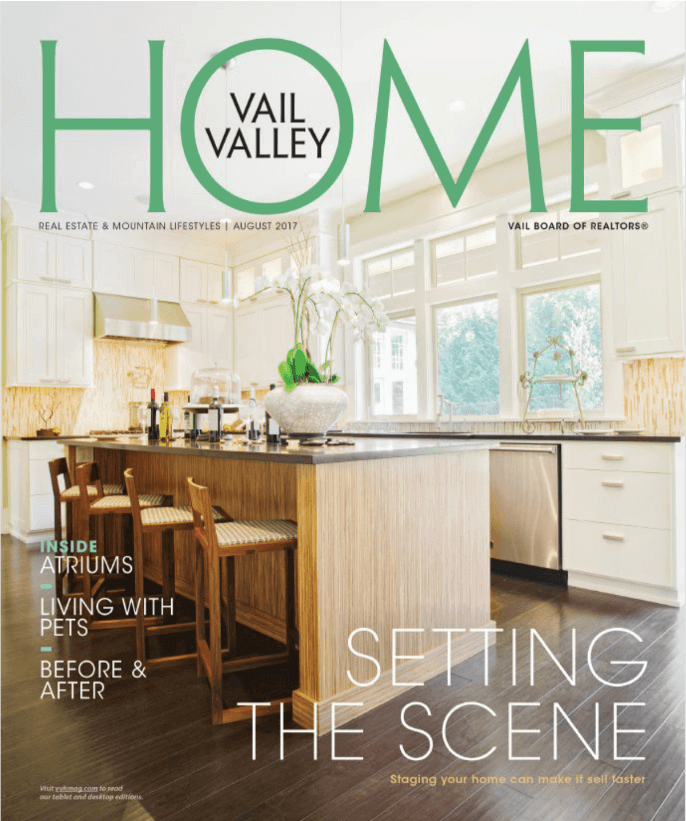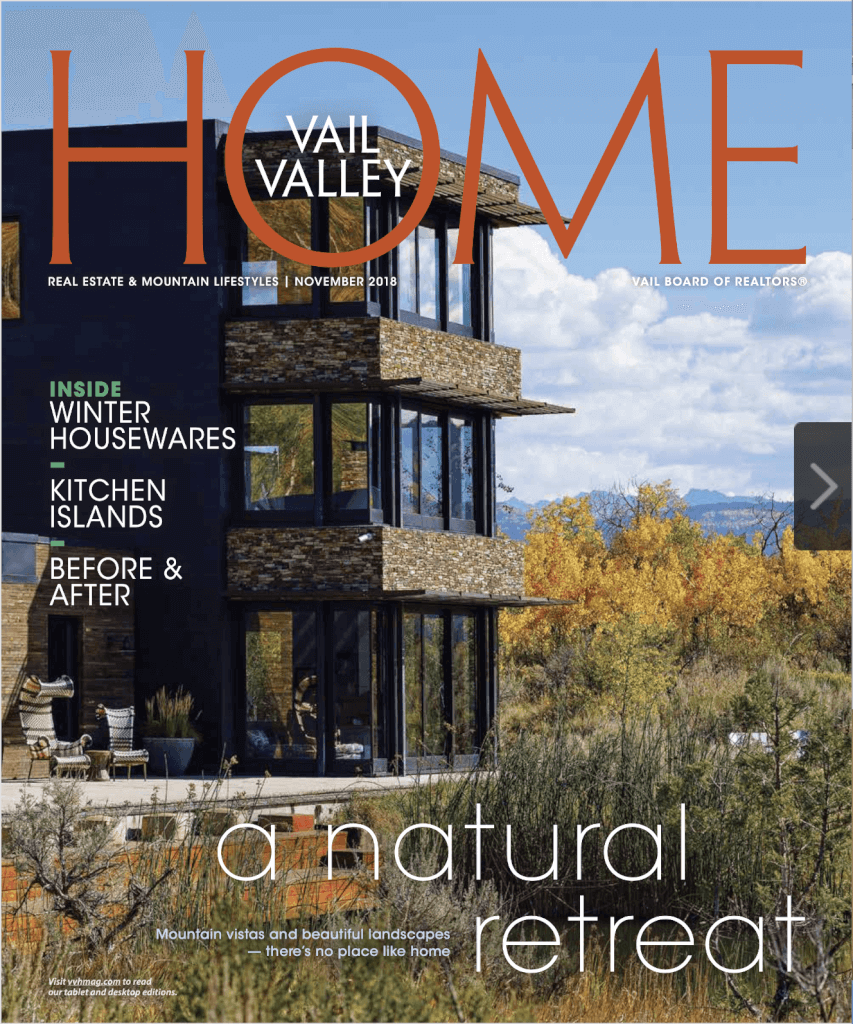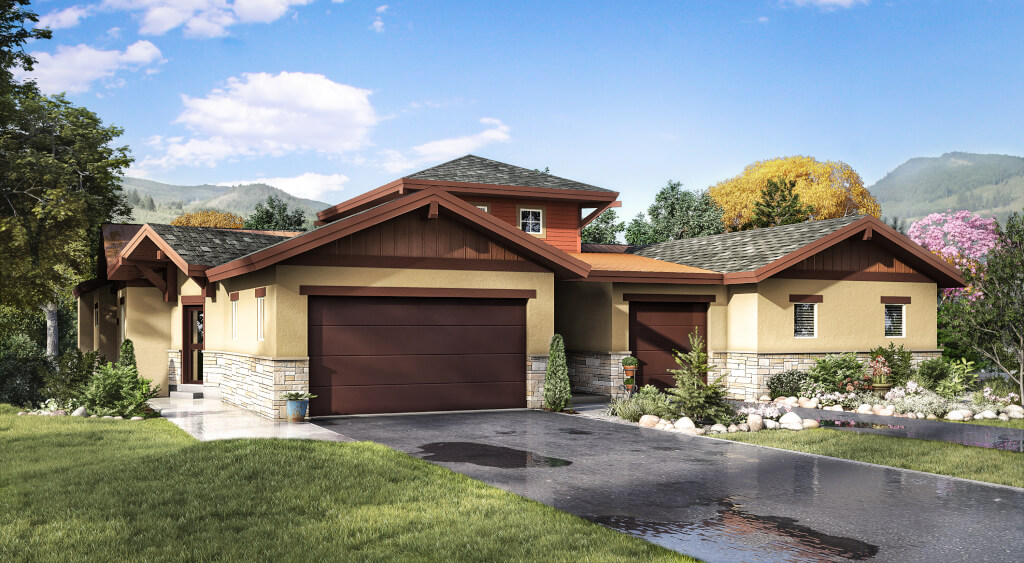
 Aging mountain residents plan for easier living by downsizing and choosing main-floor suites.
Aging mountain residents plan for easier living by downsizing and choosing main-floor suites.By Kimberly Nicoletti
The nation’s housing market is undergoing the largest group of retirees in its history. With nearly 10,000 people retiring every day, the specific home features they demand are changing the shape of architecture. As baby boomers move into their 50s, 60s and 70s, they want to remain active and live in mountain communities such as the Vail Valley, which ranks third in the nation for life expectancy, according to research published in May’s Journal of the American Medical Association. So far, the valley doesn’t offer a specifically designated age 55 and over adult community, so aging residents are partially going it on their own – buying or building homes they believe will suit them and any physical limitations they may experience – or moving to communities that support their needs.
One of the main elements aging residents desire is a main-level master bedroom. “Its becoming more common” says Kyle Webb, principal at KH Webb Architects in Vail. “They want to live on one level.”
As we age, our knees begin to ache just a little more after a day on the mountain. We watch, as surgeons replace friends’ knees or hips. We begin to know so many people who’ve blown out their ACLs and other tendons, that we must face reality: Though we’re committed to remaining active, we may just want to save ourselves from ascending and descending unnecessary staircases multiple times a day, if we can – thus, the popularity of main-level living.
 In keeping with that line of thought, aging residents are opting for zero-entry (or no step) showers, often with a fold-down bench for easier bathing.
In keeping with that line of thought, aging residents are opting for zero-entry (or no step) showers, often with a fold-down bench for easier bathing.
Webb has worked with a number of clients who have planned for a worst-case scenario of ending up in a wheelchair – even if they don’t have a medical reason to believe they will need a wheelchair. He has designed everything from main-level, open floor plans with handicap-accessible master suites, bathrooms with showers that fit wheelchairs and grab bars near toilets, to home elevators. In some cases, he simply designs a new construction or remodel to accommodate an elevator, but doesn’t actually install one, in order to save money if homeowners ultimately don’t need it; without the elevator, the space becomes a two story, stacked closet for storage.
“I think people are trying to plan for flexibility so it’s not as hard to adapt later,” Webb says, giving an example of framing shower walls so homeowners can install grab bars later.
Although aging residents want to live on one level, it doesn’t mean they won’t purchase two-story homes. Webb sees homeowners use upper levels for guests, rec room and more. Often, portions of homes that residents don’t use when guests aren’t present can be closed off and minimally heated.
“They live in the house the size they want,” Webb says, “and if they have guests they can be in areas of the house (residents) never need (themselves).”
Many of the valley’s baby boomers have already owned a large luxury home, and now, with an “empty nest,” they’re looking to downsize, says Jeanne Landreth, sales and marketing director and owner’s representative at The Villas at Cotton Ranch in Gypsum.
They often want a basement, so they can store items they’re not quite ready to purge, but they yearn for low-maintenance, “lock-and-leave communities where they can leave and not have to worry about the yard care,” Landreth says.
Communities like The Villas at Cotton Ranch take care of landscaping, plowing and other yard work. “The HOA maintenance program is tailor-made for the person on the go.” she says.
Many older folks who have lived in the Vail and Beaver Creek areas are beginning to relocated down valley, partially for its milder climate. For example, 70 percent of the residents at The Villas are over 50.

Of course, the desire to downsize doesn’t mean aging residents want to skimp on interior finishes and design. Landreth says her clients love high-end, modern design, such as The Villas’ mountain contemporary Italian cabinets and barn door pantries.
Retired homeowners also appreciate community amenities, whether its an outdoor pool and fitness center, a nearby golf course, a close library to walk to, or a pickle ball court. At the Villas, a deck that overlooks the golf course “is a place neighbors and visitors gather to enjoy one another’s company in a … comfortable atmosphere,” Landreth says.
Energy efficient homes are another draw; baby boomers are well aware of environmental issues and how they can reduce their impact by purchasing appliance, windows and doors that meet ENERGY STAR requirements.
Moving from a larger home to one that offers main-level living and low-maintenance can simplify life, and, as a result, free up time and energy to pursue recreational opportunities the mountains provide, as well as worry-free travel.
To read the article click the following link -> August Home




